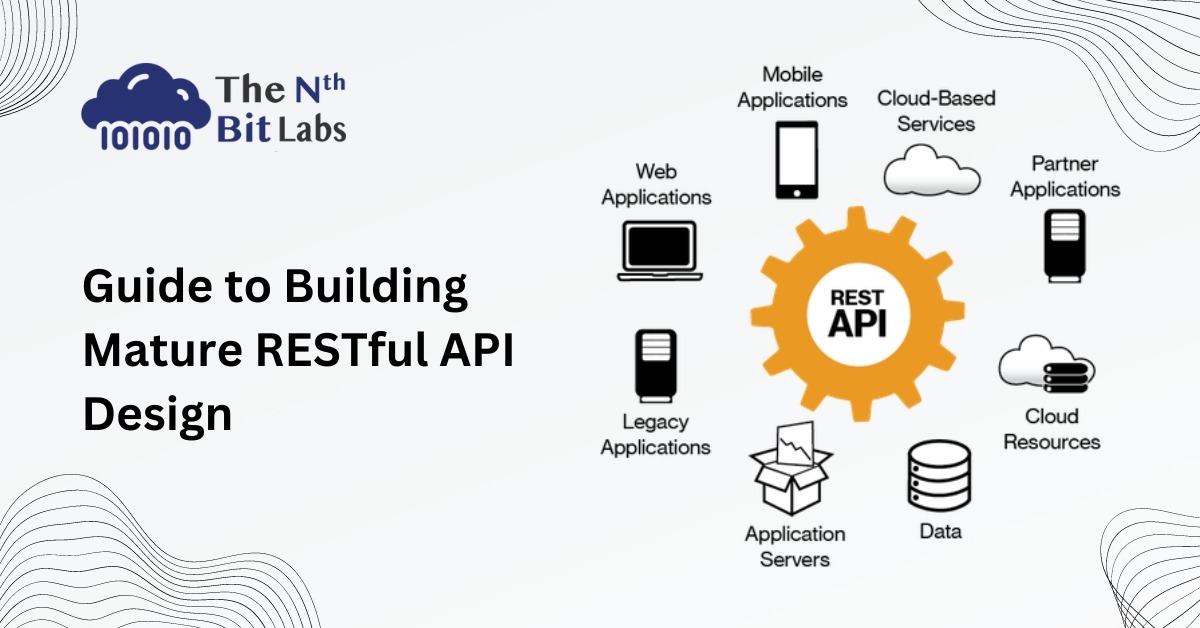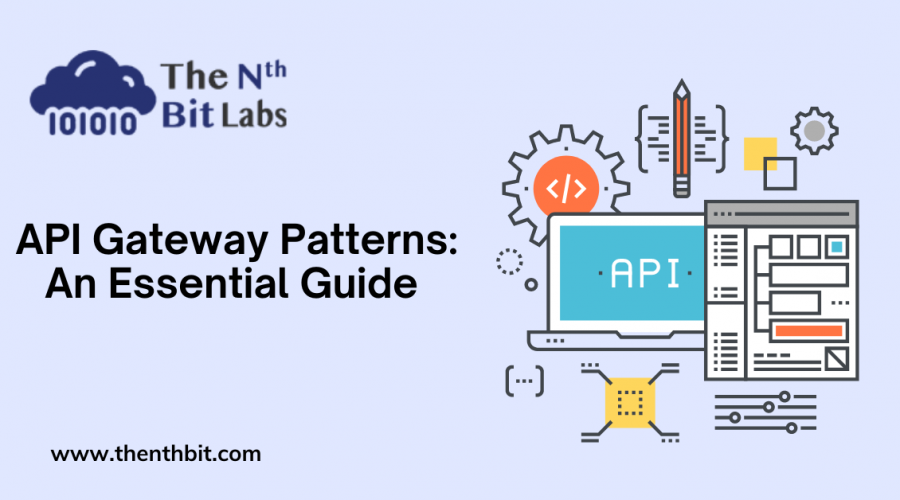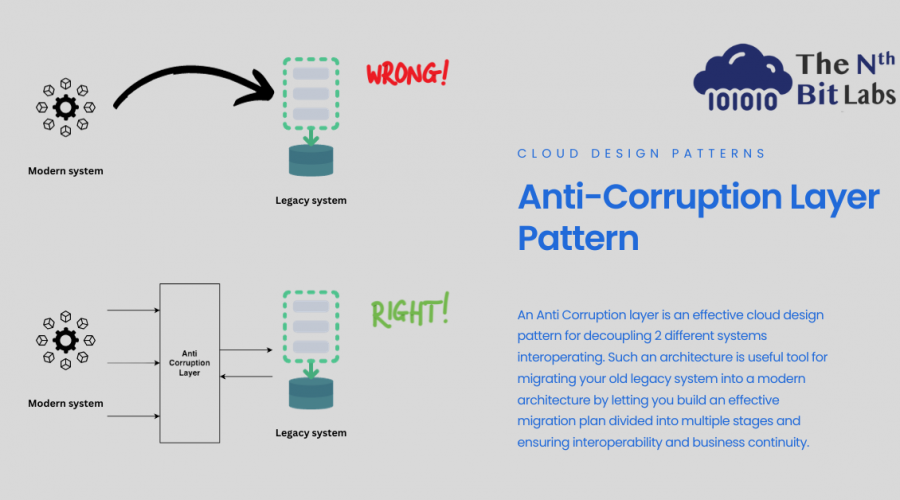The REST (Representational State Transfer) API is popular because it is a simple and flexible architectural style for building web services. It is based on the HTTP protocol, which is widely used on the internet. It also allows easy communication between different systems. Additionally, REST APIs are typically easier to implement and consume than other types of web services, such as SOAP (Simple Object Access Protocol) APIs. This makes them a popular choice for developers when building web applications and services.
Today, we will provide you with a complete guide that teaches you how to build a mature RESTful API. A powerful RESTful API helps you in creating scalable applications. In this article, we will also tell you why REST is a reasonable choice for building APIs.
What is a RESTful API?
As mentioned above, the term REST refers to Representational State Transfer. It is an interface system that allows you to communicate in complex networks using HTTP to perform various tasks. RESTful API is popular among developers for its scalable, flexible and independent nature.
The separation of the client and the server help RESTful API to scale faster which results in high performance of the application. RESTful API uses HTTP methods like GET, POST, PUT and DELETE to ensure smooth communication between the server and the client.
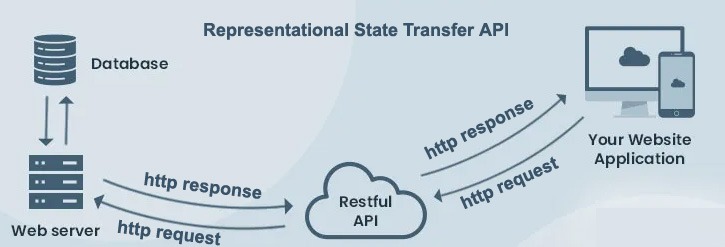
In REST architecture, no information is stored on the server which makes each client request stand alone without being affected by any previous activity. It allows complete isolation of the client’s HTTP request where the server cannot take advantage of the previously stored information. Its capability to handle many concurrent requests at once is one of the most prominent features of REST architecture.
Maturity Level of RESTful API
Let’s move on to understand what the maturity level in RESTful API is and how the higher maturity level enhances the performance for a better experience. The maturity model of API is also known as Richardson Maturity Model (RMM). According to RMM, there are four maturity levels among which Level 0 is the lowest and Level 3 is the highest level of maturity. Below are the four levels of RESTful API maturity:
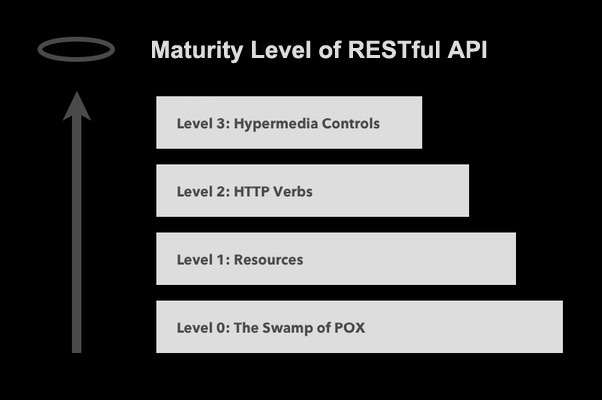
- Level 0 – Swamp of POX
- Level 1 – Resources
- Level 2 – HTTP Verbs
- Level 3 – Hypermedia Controls
We will discuss one-by-one all four levels of maturity levels for your better understanding.
Level 0 – Swamp of POX
The Swamp of POX is the first and lowest maturity level on the Richardson Maturity Model. It uses a single URI (Universal Resource Identifier) and a single HTTP method mainly POST. It means that all the queries in the system will go through POST only.
Level 1 – Resources
Being one level higher than the Swamp of POX, Level 1 employs multiple URIs for retrieving and creating data. It uses only one HTTP method which is typically POST. In comparison to level 0, Level 1 can handle the system complexity by breaking down one single service point into several endpoints in order to enhance functionality.
Level 2 – HTTP Verbs
Providing the server with higher scalability, Level 2 allows each request to correctly use the HTTP verbs. Instead of using the POST method, we use the GET and DELETE methods to request a resource.
Level 3 – Hypermedia Controls
Level 3 has the highest level of maturity and uses multiple URIs, HTTP and HATEOAS. In this model, the API navigates the client through the application by using hypermedia controls. The responses in level 3 RESTful API are more descriptive and are able to discover new functions like filtering, sorting and many more.
Best Practices For Designing RESTful API
It is very important for developers to develop APIs that are reliable, secure and easy to use. We’ll tell you some of the best practices that you can use to develop scalable APIs that meet the highest standards.
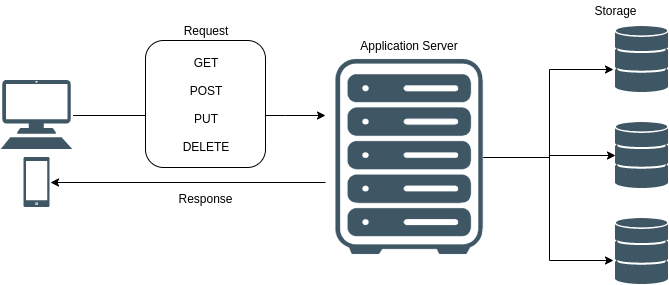
API Documentation
Always make sure that you do proper documentation of your API. API documentation consists of a list of endpoints, a description of each endpoint, and also example requests and responses for these endpoints. The documents can be accessed by everyone and are open to the public. It also helps developers to easily and efficiently while building codes.
Use Noun Instead of Verbs
URI should contain Nouns and not Verbs. It is not a good idea to use verbs at the endpoint paths. Verbs make the endpoints more complex and hard to understand. To make things simpler, always remember to use Nouns for resources and define the actions with HTTP Verbs.
Use JSON for Response
JSON is a data-interchange format that is apt for humans and machines both. It is a format that humans can understand and machines can easily generate. JSON supports various programming languages that can be encoded and decoded through HTTP client or Fetch API. The RESTful API should request payload and send responses using JSON. It is the standard and efficient way of transferring data.
Versioning
Change is inevitable white creating APIs, and versioning plays a crucial role in implementing these changes. It allows developers to modify the change in API while also offering older versions of it. API versioning is an efficient way of communicating requests to the endpoints. It prevents invalid requests from hitting endpoints.
Error Handling
An API displays an error message to the visitor in a consumable way. These API errors should provide a clear status code that is understandable. Usually, there are two types of API errors i.e., Client issues (400 series errors) and Server issues (500 series errors). For error handling, validation errors for requests (PUT, PATCH and POST) will require a field breakdown.
In Conclusion
RESTful APIs, or Representational State Transfer APIs, are a type of web service that allows for communication between different systems over the internet. For example, if you want to retrieve information about a particular user in a RESTful API, you would send a GET request to the URL representing that user. RESTful APIs also typically use a stateless client-server architecture, which means that each request from a client must contain all the necessary information to complete the request and that the server does not maintain any client state between requests. Overall, RESTful APIs provide a flexible and powerful way to build web applications that can be easily integrated with other systems.
Do you understand the concept of RESTful API but need expert advice to implement it for your business? Contact The Nth Bit Labs for expert services and get advice from the professional team of software developers and engineers.

